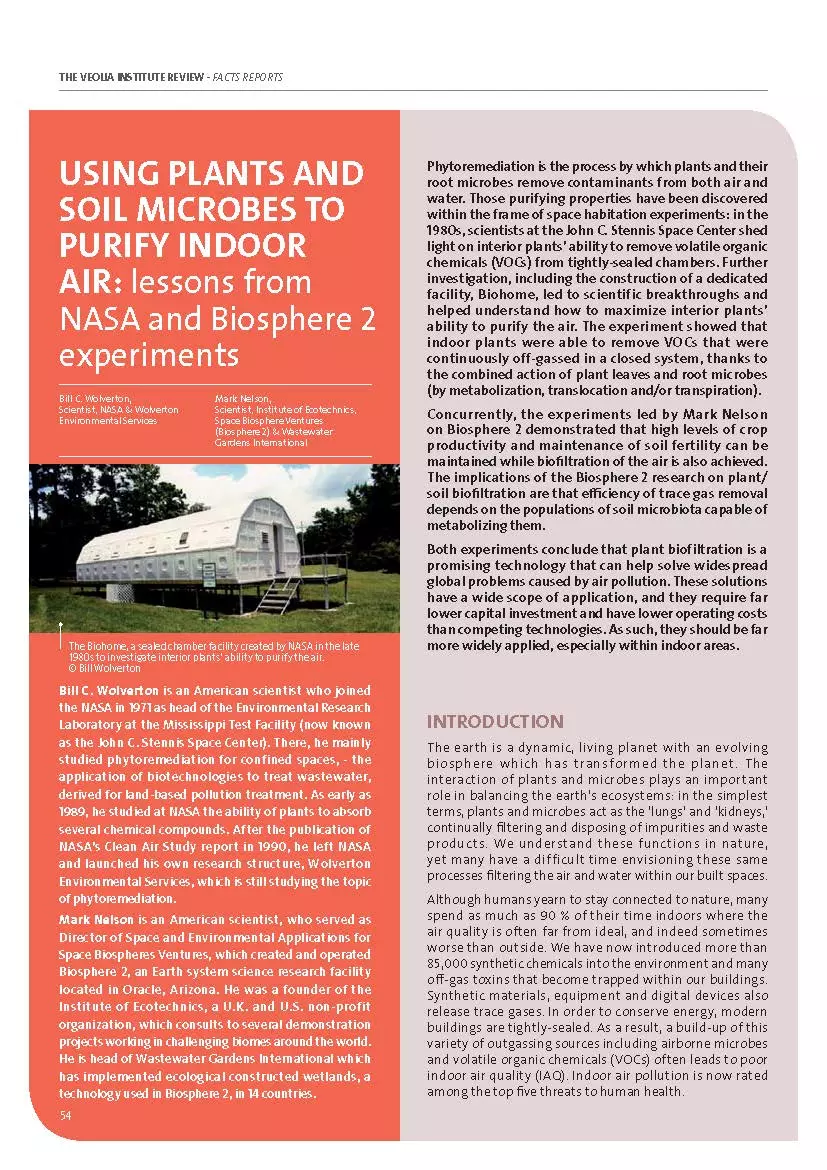Bill C. Wolverton,
Scientist, NASA & Wolverton Environmental Services
Mark Nelson,
Scientist, Institute of Ecotechnics, Space Biosphere Ventures (Biosphere 2) & Wastewater Gardens International
Phytoremediation is the process by which plants and their root microbes remove contaminants from both air and water. Those purifying properties have been discovered within the frame of space habitation experiments: in the 1980s, scientists at the John C. Stennis Space Center shed light on interior plants’ ability to remove volatile organic chemicals (VOCs) from tightly-sealed chambers. Further investigation, including the construction of a dedicated facility, Biohome, led to scientific breakthroughs and helped understand how to maximize interior plants’ability to purify the air. The experiment showed that indoor plants were able to remove VOCs that were continuously off-gassed in a closed system, thanks to the combined action of plant leaves and root microbes (by metabolization, translocation and/or transpiration).
Concurrently, the experiments led by Mark Nelson on Biosphere 2 demonstrated that high levels of crop productivity and maintenance of soil fertility can be maintained while biofi ltration of the air is also achieved. The implications of the Biosphere 2 research on plant/ soil biofiltration are that effi ciency of trace gas removal depends on the populations of soil microbiota capable of metabolizing them.
Both experiments conclude that plant biofiltration is a promising technology that can help solve widespread global problems caused by air pollution. These solutions have a wide scope of application, and they require far lower capital investment and have lower operating costs than competing technologies. As such, they should be far more widely applied, especially within indoor areas.



